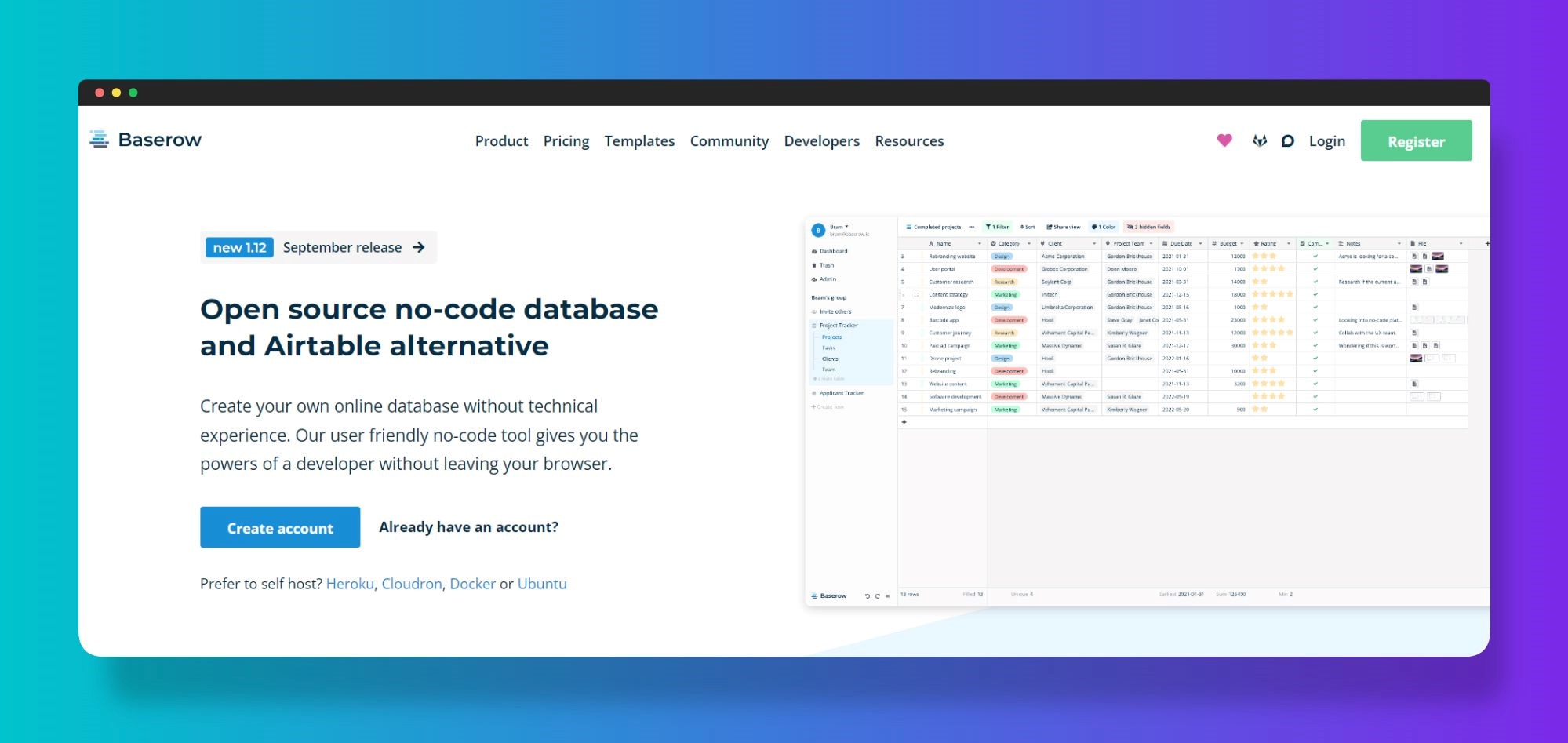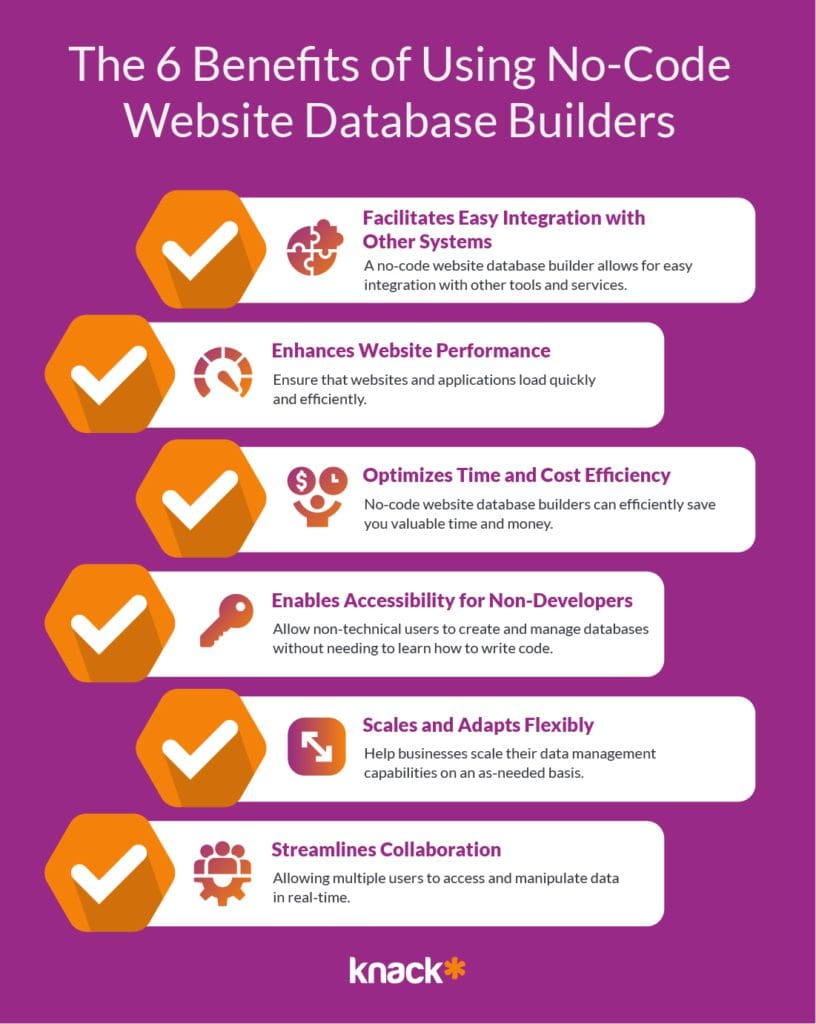No-Code Open Platform Data Source Production: Empowering Companies to Build Faster
No-Code Open Platform Data Source Production: Empowering Companies to Build Faster
Blog Article
Discovering the Advantages of Scalable Databases That Require No Coding Skills for Effective Information Monitoring Solutions
The introduction of scalable databases that remove the requirement for coding abilities presents a transformative opportunity for companies seeking efficient information administration remedies. By enabling non-technical customers to harness the power of data with instinctive user interfaces, these systems boost accessibility and foster collaboration throughout varied groups. Furthermore, their cost-effectiveness and versatility to evolving service demands can significantly simplify functional procedures. As we consider the implications of such advancements, it comes to be essential to check out how they can improve the landscape of data administration and drive sustainable growth in a competitive environment.
Enhanced Ease Of Access for Users
Enhanced accessibility for individuals is a crucial element of scalable data sources, guaranteeing that data administration systems are intuitive and easy to use. In a period where data-driven choices are extremely important, ease of access enables a broader variety of users, including those without considerable technical proficiency, to engage with database systems effectively. This democratization of data access facilitates enhanced partnership throughout departments, equipping workers to make and draw out insights educated choices.
Straightforward interfaces, such as visual information and drag-and-drop functions depiction, streamline intricate data interactions. These enhancements reduce the knowing contour related to traditional data source management, allowing users to concentrate on leveraging data as opposed to grappling with technical complexities. In addition, scalable databases usually incorporate real-time analytics and adjustable control panels, offering customers with immediate understandings customized to their details requirements.

Cost-Effectiveness and Source Savings
Efficient information management not just hinges on availability yet additionally on cost-effectiveness and resource financial savings. Scalable databases designed for customers without any coding abilities dramatically lower financial problems generally associated with conventional database administration systems. By eliminating the need for specialized programming knowledge, organizations can allot their resources much more effectively, concentrating funds on core organization tasks instead of considerable training or working with proficient workers.
Additionally, these data sources typically utilize cloud-based services, which additionally lower prices associated to hardware and upkeep. Organizations can scale their data source solutions according to their requirements, staying clear of the expenditures incurred from over-provisioning sources. This adaptability implies services can adjust to altering needs without incurring unnecessary expenses, resulting in significant long-lasting cost savings.
Additionally, user-friendly interfaces simplify data access and management procedures, reducing the moment spent on administrative tasks. This efficiency converts right into labor cost financial savings, allowing groups to concentrate on strategic initiatives instead of regular upkeep. Generally, embracing scalable databases that require no coding abilities cultivates an extra affordable technique to data monitoring, allowing organizations to maximize their sources while keeping high degrees of operational performance.
Improved Cooperation Across Teams

Moreover, scalable databases help with smooth communication amongst group participants. With easy to use user interfaces that need no coding abilities, workers can easily develop, change, and share reports or control panels customized to their specific requirements. This democratization of data encourages non-technical users to add understandings, enhancing the collective setting.
Additionally, these databases sustain simultaneous accessibility, enabling numerous customers to deal with the very same dataset at the same time. This function boosts performance, as groups can participate in joint information analysis without the danger of variation control issues. The ability to leave visit this web-site notes or comments directly within the data source additionally advertises dialogue and makes clear data interpretations.
Streamlined Data Monitoring Processes
In today's data-driven atmosphere, companies recognize the need of streamlined data monitoring refines to maximize performance and precision. By leveraging scalable databases that call for no coding abilities, businesses can simplify their information handling and decrease the complexities typically related to traditional database systems. This access encourages non-technical users to engage straight with information, facilitating quicker decision-making and reducing reliance on specialized IT employees.
Streamlined information management procedures improve operations by automating regular tasks such as information access, recognition, and reporting. Automated data integration makes sure that info from various sources is aggregated seamlessly, getting rid of silos and fostering an unified view of critical service metrics (no-code). Straightforward user interfaces allow employees to control information quickly, allowing them to generate insights that drive critical initiatives without the need for comprehensive training.
This effectiveness not just speeds up functional procedures however likewise minimizes the potential for human mistake, guaranteeing that data remains reliable and accurate. Eventually, streamlined data monitoring procedures via scalable databases bring about enhanced performance, enabling companies to concentrate on core tasks while making sure that their data administration practices are reliable and effective.
Scalability for Growing Businesses

For broadening business, the ability to scale up or down is important. A scalable data source can take care of an influx of information generated from new customers, items, or services, making certain that service procedures continue to be nonstop. These data sources offer the capability to handle peak lots efficiently, which is vital during periods of rapid development or like this seasonal spikes.
In addition, many scalable data source solutions are created with easy to use user interfaces that call for no coding abilities, empowering non-technical personnel to manage data properly (no-code). This democratization of data management enables organizations to allot sources purposefully and reduce dependence on specialized IT personnel
Eventually, adopting a scalable database not only improves functional efficiency yet likewise fosters an environment where organizations can innovate and evolve without the constraints of conventional data source systems. This versatility settings organizations for long-lasting success in today's Continue affordable landscape.
Verdict
In final thought, scalable data sources that require no coding abilities give considerable benefits for reliable information management. By simplifying information monitoring processes and providing scalability for expanding companies, such options enable organizations to adapt to transforming demands efficiently.
Enhanced ease of access for individuals is a critical element of scalable data sources, making sure that data monitoring systems are intuitive and straightforward.User-friendly interfaces, such as drag-and-drop functions and aesthetic information representation, simplify intricate data interactions. Overall, embracing scalable data sources that require no coding abilities fosters a more economical strategy to information management, enabling companies to maximize their resources while keeping high degrees of functional performance.
By leveraging scalable data sources that require no coding skills, companies can streamline their information handling and decrease the complexities typically linked with conventional database systems - no-code.Structured data monitoring procedures enhance workflow by automating routine tasks such as information entry, recognition, and reporting
Report this page